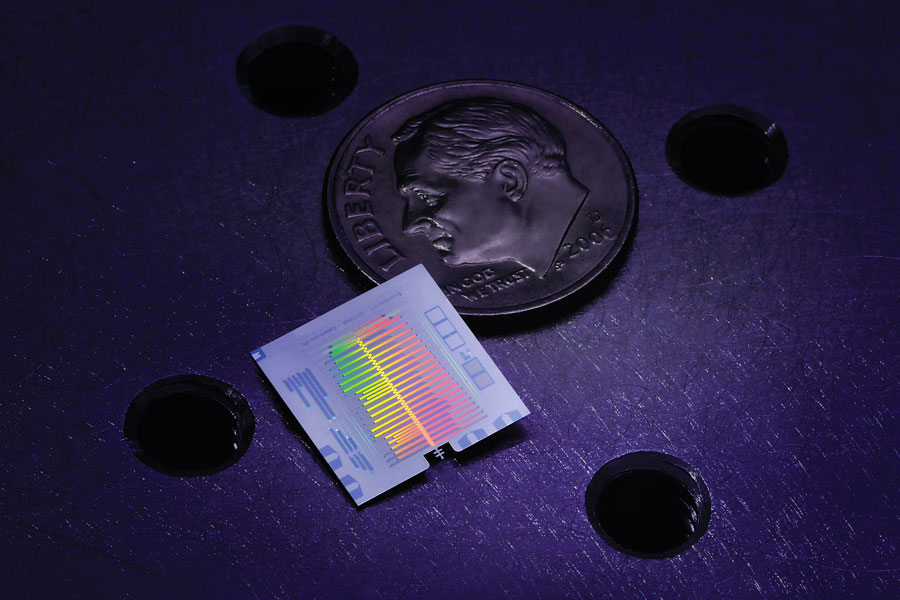Above:
A prototype single-chip spectrometer operating in the millimeter-wave regime. The millimeter-wave signal is coupled from a waveguide (not shown) through a probe at the bottom of a chip and transmitted via superconducting microstrip down the center of the chip. Tuned filters along the microstrip redirect narrow bands of the radiation to individual detectors along the side of the microstrip to determine the spectral content of the original signal.
MKIDs
Looking Back Towards the Beginning of Time from Earth
Peter Day - Rick Leduc - Byeong Ho Eom
Microwave Kinetic Inductance Detectors (MKIDs) were developed at Caltech and JPL in the early 2000s. Detectors like these enable further and more detailed studies of the Cosmic Microwave Background (CMB), the extant evidence of the Big Bang. Funded by NASA Research Opportunities for Space and Earth Sciences (ROSES) grants, development and demonstrations of MKID focal planes continued through 2018. New instrument concepts are building on the successful demonstrations of MAKO, a 432-element submillimeter-wave photometer, and the Multiwavelength Submillimeter kinetic Inductance Camera (MUSIC), a 576-pixel, 4-band millimeter-wave photometer, at the Caltech Submillimeter Observatory (CSO). A 1,920-pixel array of dual-polarization, feed horn coupled detectors operating at 150 GHz is being developed for passive millimeter-wave terrestrial imaging for the Office of Naval Research. This technology is relevant to CMB polarization studies, particularly to CMB-S4, the ground-based collaborative experiment, where it represents a cost-effective approach to realizing the large detector counts needed for detecting the ‘B-mode’ signal in the CMB polarization due to cosmic inflation, among other scientific targets.
The wavelength range over which MKID arrays operate is also being pushed into the mid-IR. This development targets space missions such as the Galaxy Evolution Probe that require the highest possible sensitivity and allows for a single detector technology to cover the wavelength range from about 10 microns down to the submillimeter.
Low frequency KID resonator consisting of a superconducting NbTiN meandered inductor (top) and an interdigitated capacitor (bottom) coupled to a coplanar waveguide feedline (running across the top).
+ Larger image



